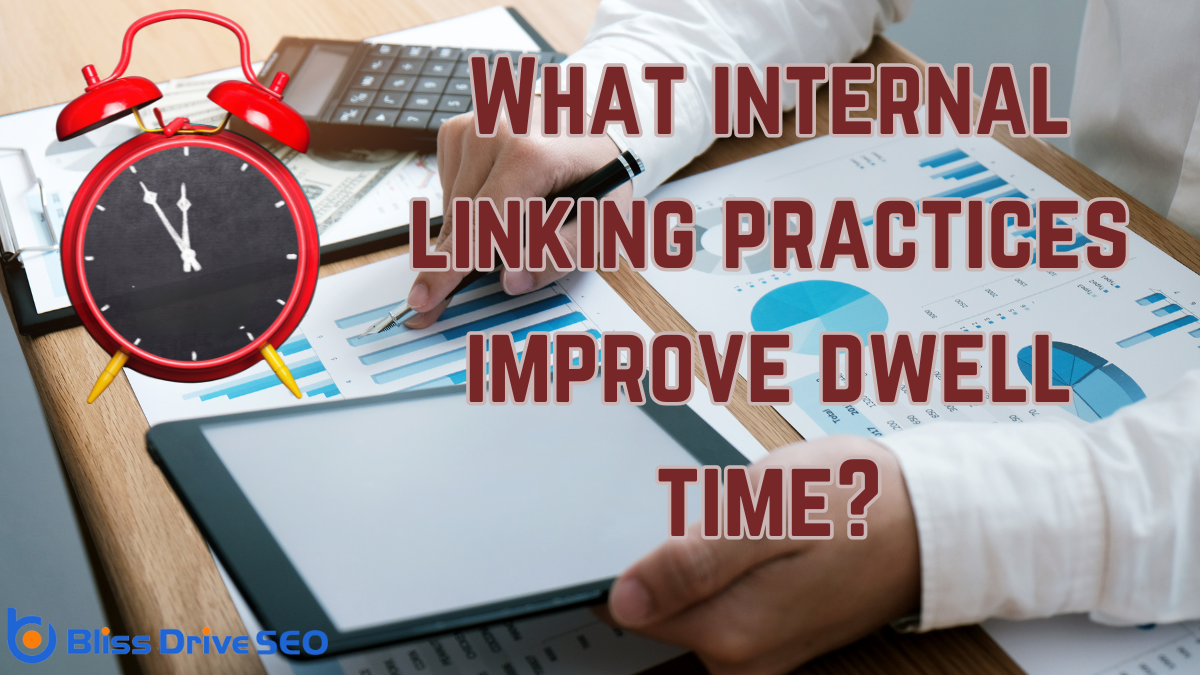Digital Marketing Services
Learn More About Us

When it comes to improving dwell time, internal linkingLinks that connect different pages on the same website. is a powerful tool at your disposal. By choosing the right anchor textThe clickable text in a hyperlink, important for SEO as it provides context for the linked page. and ensuring links are contextually relevant, you guide visitors seamlessly through related topics. This practice not only enhances the user experience but also encourages further exploration. A well-organized site structure with logical navigation can make all the difference. Curious about how to optimize these strategies for maximum engagementThe interactions that users have with a brand’s content on social media.?
Although often overlooked, understanding the importance of dwell time is essential for enhancing your website's performance.
Dwell time refers to how long a visitor spends on your site after clicking a search result before returning to the search engine results page. It's a significant metric that reflects how engaging and valuable your content is to users. When people spend more time on your site, search engines interpret this as a sign of quality, potentially boosting your rankingsThe position at which a website appears in the SERP..
To improve dwell time, focus on creating content that captures attention quickly and holds it throughout. Use compelling headlines, concise yet informative text, and engaging media like images or videos.

When choosing the right anchor text for internal links, it's crucial to think strategically about how it influences both user experience and SEO. Your anchor text should be clear and descriptive, guiding users and search engines alike to understand the linked content's relevance.
Consider the following tips:
Incorporating links that are contextually relevant is essential for enhancing both user experience and SEO performance. When you create links that align with the content surrounding them, you provide readers with seamless navigation. This means they're more likely to stay longer and engage with additional content on your site.
You'll want to guarantee that when a user clicks a link, it leads to a page that directly relates to their current interest or query.
Additionally, search engines like Google reward pages that maintain contextual relevance because it indicates a cohesive and well-structured site. By doing so, you're not just improving dwell time but also boosting your site's credibility.
Make sure each link you include genuinely adds value to the reader's journey and satisfies their curiosity.
When creating a logical site structure, focus on a hierarchical navigation design that guides visitors effortlessly through your content.
Use a topic clustering strategy to group related content, ensuring users find what they need without hassle.
Aim for a seamless content flow that keeps users engaged and encourages longer visits.
To enhance user experience and improve dwell time, it's crucial to implement a hierarchical navigation design that offers a logical site structure. This approach helps users find information quickly and encourages them to explore more pages.
Begin by organizing content into categories and subcategories, which guides users intuitively through your site. Use clear labels and guarantee each page links logically to the next.
Here's how you can effectively structure your site:
Although enhancing your site's navigation is essential, diving deeper into a topic clustering strategy can further improve dwell time by creating a logical site structure.
By grouping related content around a central pillar page, you make navigation intuitive for users and search engines alike. This approach allows visitors to explore a topic thoroughly without getting lost, increasing their time spent on your site.
To implement this, identify core topics relevant to your audience and create detailed pillar pages. Link related articles to these pillar pages, forming a cohesive cluster.
This structure not only aids user experience but also signals to search engines that your site is an authority on the subject. By organizing content logically, you guide users seamlessly, encouraging them to engage with more of your content.
Building on the foundation of topic clustering, ensuring a seamless content flow is key to creating a logical site structure. You want visitors to effortlessly navigate your site, finding the information they need without frustration.
This flow not only improves user experience but also boosts dwell time. By strategically linking related content, you guide users through a well-thought-out journey.
Here's how to achieve a seamless content flow:
When you want to enhance user experience on your website, breadcrumb navigationA navigational aid showing the user’s path to the current page. proves invaluable by streamlining the browsing process. Breadcrumbs act as a trail, showing users their journey through your site's hierarchy. They help users easily backtrack to previous pages, reducing frustration and enhancing satisfaction.
By offering a clear path, you minimize confusion and make your site more intuitive. Integrating breadcrumb navigation boosts dwell time by encouraging users to explore more pages without getting lost. They'll quickly understand where they are and how to navigate further.
This clarity reduces bounce rates, as visitors feel more confident exploring your content. To implement breadcrumbs effectively, guarantee they're prominently placed and consistent across your site. This small addition can make a big difference in user engagement.

To optimize your internal linking strategy, it's crucial to balance link quantity and quality effectively. You don't want to overwhelm visitors with too many links, but you also need enough to guide them through your content.
Focus on creating a seamless user experience by confirming each link adds value. Here are some tips:
Effectively monitoring and analyzing your link performance is essential for refining your internal linking strategy. By tracking key metrics like click-through rates and average session duration, you can understand which links engage users the most.
Use tools like Google AnalyticsA web analytics service offered by Google that tracks and reports website traffic. to gather this data, helping you identify patterns and areas for improvement. Pay attention to bounce rates as well; high bounce rates might indicate that your links aren't meeting user expectations.
Regularly updating and testing your links allows you to ascertain they remain relevant and effective. Don't hesitate to tweak underperforming links; small adjustments can leadA potential customer referred by an affiliate who has shown interest in the product or service but h... to significant improvements in user engagement.
To make your content more engaging, focus on using contextual anchor text that naturally fits within your writing.
Place relevant links where they support the reader's journey, ensuring they add value without interrupting the flow.
Incorporating contextual anchor text into your content is a powerful strategy to enhance user engagement and improve dwell time. By using descriptive and relevant words or phrases, you guide readers to additional valuable content, encouraging them to explore further.
Contextual anchor text helps users understand what they'll find when clicking a link, making their browsing experience more intuitive and satisfying.
Here are five tips to effectively use contextual anchor text:
Having mastered the art of contextual anchor text, it's time to explore how strategic link placement can further boost your content's value.
Placing relevant links within your content not only enhances the user experience but also encourages readers to explore more pages on your site. To achieve this, identify sections where additional resources or related topics naturally fit and add links there.
Don't just throw in links—ensure they genuinely complement the surrounding content. This approach helps readers find valuable information effortlessly, increasing their time spent on your site.
When structuring your content, a hierarchical approach can greatly improve user navigation and engagement. By organizing information from broad to specific, you help users easily locate the content they're interested in. This method not only enhances the user experience but also boosts dwell time by encouraging deeper exploration.
To effectively implement a hierarchical content structure, consider these strategies:
These practices support user satisfaction and longer site visits.

To guarantee a seamless user experience and boost dwell time, it's essential to keep your internal links up-to-date and fully functional. Broken or outdated links frustrate users, leading them to leave your site.
Regularly auditing your links can help identify and fix any issues. Use a link checker tool to quickly spot broken links, ensuring users don't hit dead ends.
When updating content, review your links to confirm they're still relevant. This practice helps maintain an interconnected site structure, guiding users smoothly from one page to another.
Don't overlook the importance of redirecting outdated URLs to new pages, preserving link equity and continuity. By keeping your links in top shape, you're enhancing user engagement and encouraging longer site visits.
To boost dwell time, focus on selecting contextual anchor text that naturally fits your content and guides users to related topics. Ascertain your site's structure is logical and intuitive, making it easy for visitors to explore and discover valuable information. Use breadcrumb navigation to enhance the browsing experience, and balance the quantity and quality of your links. Regularly monitor link performance and keep them up-to-date to maintain a seamless, engaging user experience.
